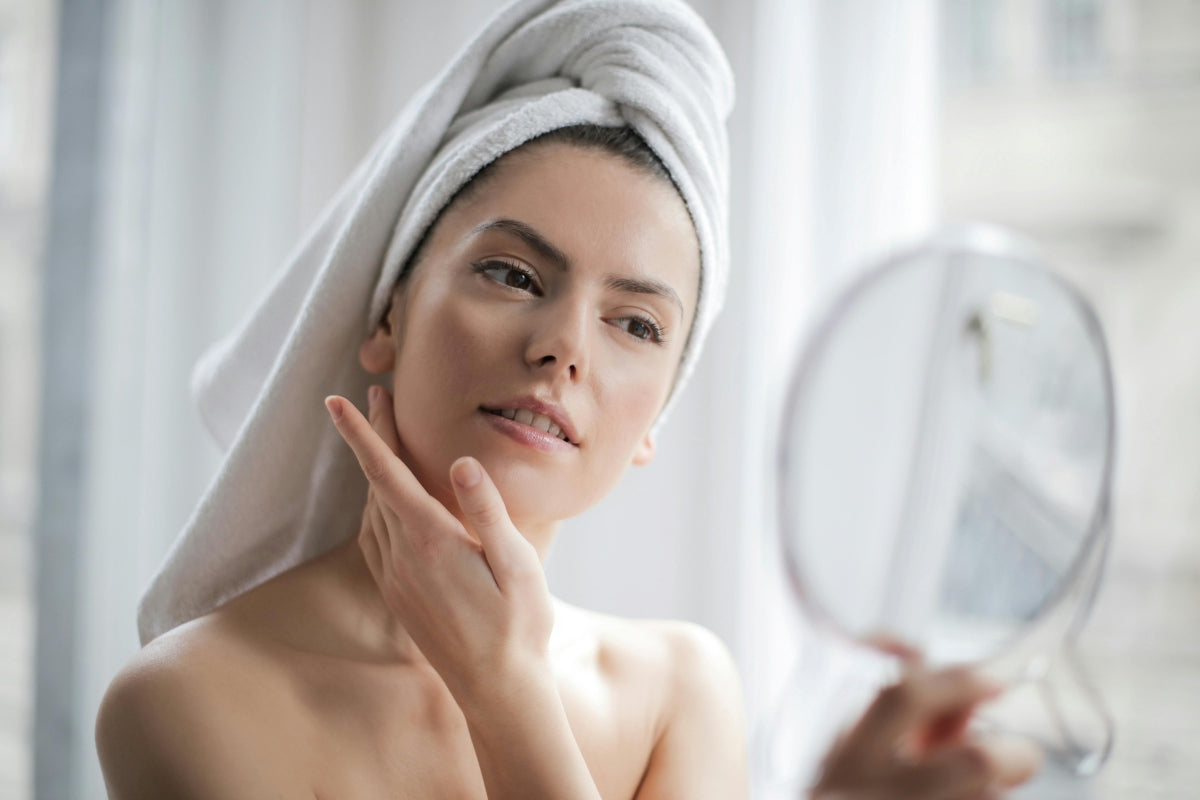Blog > All
What Does Infrared Light Do
Written by Our Editorial Team
6 min read
00
DAYS D00
HOURS H00
MINUTES M00
SECONDS S

What does infrared light do? It's a question more women are asking as infrared technology moves from dermatology offices to at-home skincare routines. Infrared light may be invisible to the eye, but its impact on skin health is anything but.
This non-invasive wavelength penetrates deeper than traditional light therapies, delivering measurable results in collagen production, circulation, and recovery – all without trauma or downtime.
What this article covers:
Infrared light is more than a beauty buzzword. It's backed by decades of scientific study and now plays a vital role in advanced skin rejuvenation protocols.
While red LED light focuses on surface-level cellular stimulation, infrared light reaches the dermis (the structural foundation of your skin, where aging and inflammation begin. This reach is what gives infrared light its restorative power.
Infrared light occupies a specific part of the electromagnetic spectrum, just beyond visible red light. Although unseen to the naked eye, its heat signature is profoundly felt in the skin.
There are three main categories of infrared light:
Skincare devices like Qure's LED mask leverage near-infrared light to safely stimulate collagen, increase microcirculation, and support cellular repair – all while preserving the skin barrier.
These are critical benefits for women with sensitive, reactive, or mature skin.

Infrared therapy works through a process known as photobiomodulation, a biological reaction triggered by light.
When infrared light reaches the dermis, it stimulates the mitochondria (your cells' energy centers) to produce more ATP (adenosine triphosphate). More ATP means faster skin regeneration, better hydration retention, and improved resilience.
You've likely heard of red LED lights. So, what does red LED light do for skin, and how is it different from infrared?
Red light therapy targets the epidermis and top layer of the dermis, increasing cell turnover and improving tone. Infrared light penetrates deeper, targeting inflammation and collagen scaffolding.
Here's how they compare:
|
Therapy Type |
Target Wavelengths |
Key Skin Benefits |
|
Red LED Light |
620–750 nm |
Brightens tone, refines texture, reduces surface acne |
|
Near-Infrared |
750–1200+ nm |
Boosts collagen, improves healing, calms inflammation |
Qure combines both red and near-infrared wavelengths in the Q-Rejuvalight Pro LED face mask, allowing for comprehensive treatment in just one 3-minute session per area.
Infrared light's therapeutic effects are both cumulative and cellular. Unlike topical skincare that sits at the surface, near-infrared wavelengths penetrate deep into the dermis. Here's how that affects your skin.
Near-infrared light activates fibroblasts, the specialized cells responsible for producing collagen and elastin.
By increasing ATP synthesis within the mitochondria, infrared therapy gives your skin the cellular energy it needs to build and maintain structural proteins.
The result: firmer skin, fewer visible fine lines, and improved dermal resilience over time.

NIR exposure improves microvascular blood flow, increasing oxygen and nutrient delivery to the skin. This improved circulation not only supports healing but also contributes to a naturally luminous, healthy-looking complexion.
It's one of the reasons infrared therapy is often used post-treatment in dermatology clinics.
Infrared light has been shown to suppress pro-inflammatory cytokines and modulate oxidative stress in the dermis. This makes it especially beneficial for sensitive, reactive, or post-procedure skin.
By calming internal inflammation, it helps reduce redness, swelling, and barrier disruption, without the need for steroids or exfoliants.
Infrared therapy supports tissue regeneration and speeds wound healing by encouraging cellular proliferation and reducing local inflammation.
Using NIR light after laser resurfacing, microneedling, or chemical peels results in shorter recovery windows. It's ideal for maintaining skin progress between in-office treatments.
As skin ages, dermal thickness and elasticity decline. Infrared therapy helps reverse this trend by stimulating extracellular matrix remodeling. With consistent use, you'll notice smoother texture, visibly tighter skin, and a more even tone.
Infrared light is especially effective when combined with barrier-friendly hydration. Prepping the skin with the Qure hypochlorous acid spray before each infrared session helps prime cells for energy uptake, improves comfort, and enhances results.

Infrared light is gentle, but not all devices are created equal. Clinical efficacy depends on precise wavelength, energy output, and design. Devices that use suboptimal or inconsistent parameters may offer little to no benefit, or worse, cause irritation.
There are also a few persistent misconceptions, including:
If you're still wary, Qure's LED face mask is FDA-cleared and dermatologist-approved and has undergone rigorous safety testing.
Transitioning to at-home infrared therapy can feel like unlocking a new level of skincare autonomy. But clinical results require consistency, and consistency requires trust in your tools.
Qure's Q-Rejuvalight Pro LED face mask is engineered to deliver dermatologist-grade results in minutes, right from your home. It uses patented light diffusion technology to ensure full facial coverage, including often-neglected areas like the jawline and temples.
How to use infrared light effectively:
The results are cumulative. After four to six weeks of regular use, you'll typically notice increased firmness, more even tone, and reduced signs of reactivity.
What does infrared light do? It builds better skin from beneath the surface – quietly, safely, and powerfully.
For anyone navigating sensitive skin, hormonal shifts, or aging concerns, infrared therapy offers a rare combination: science-driven results without the trauma of aggressive treatments.
At Qure Skincare, we believe in intelligent skincare that doesn't compromise. That's why every device is developed with a science-first approach, dermatologist oversight, and proven compatibility for reactive skin.
Bold skin decisions deserve quiet confidence. With Qure, the future of your skin is in your hands.
Read more about targeted skincare topics:
Most Popular Posts